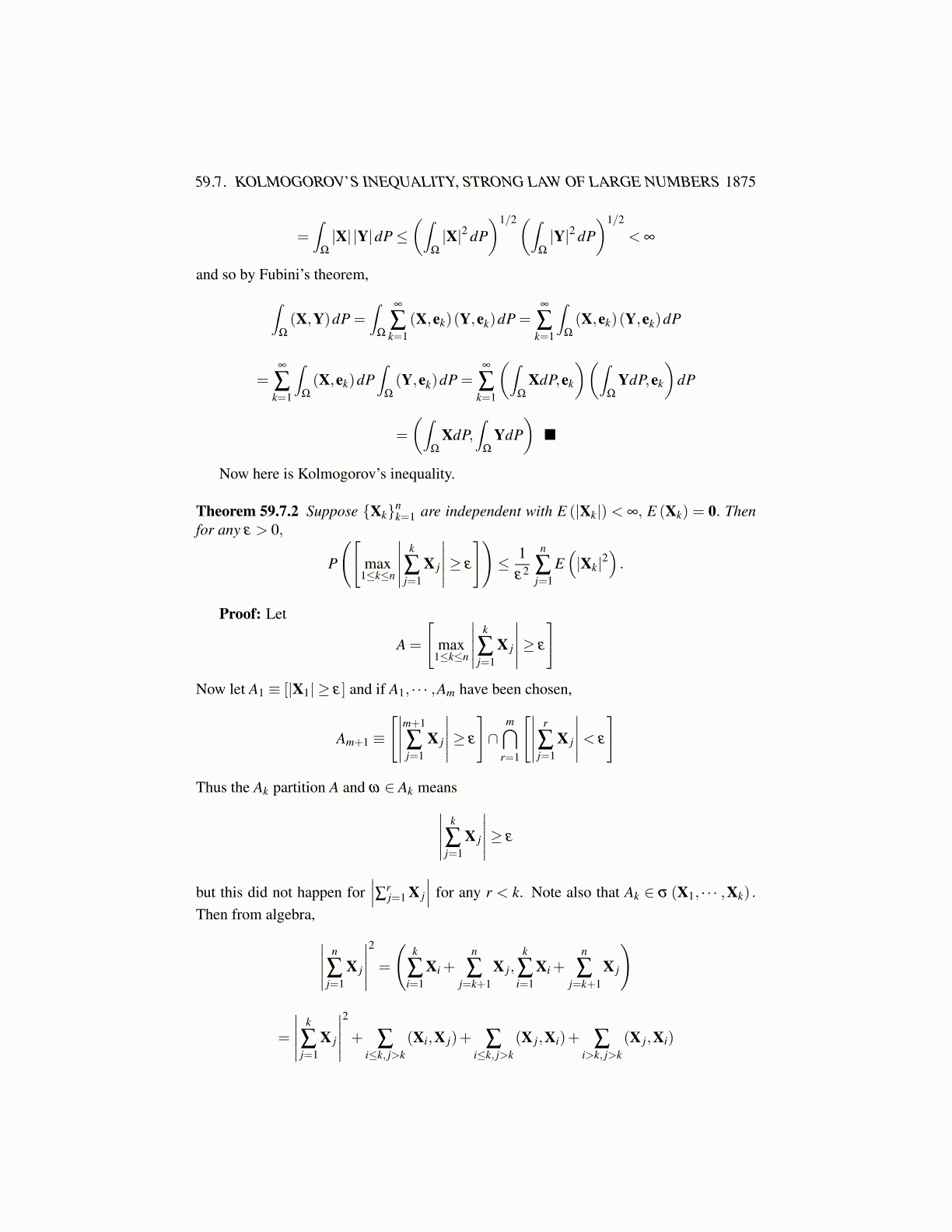
59.6. 0,1 LAWS 1875
and soP(A∩BC)= P(A)−P(A∩B) = P(A)(1−P(B)) = P(A)P
(BC) .
and so BC ∈ G . If {Bi}∞
i=1 are disjoint sets in G ,
P(A∩∪∞k=1Bk) =
∞
∑k=1
P(A∩Bk) = P(A)∞
∑k=1
P(Bk)
= P(A)P(∪∞k=1Bk)
and so ∪∞k=1Bk ∈ G . Therefore by the Lemma on π systems Lemma 12.12.3 on Page 329,
it follows G = σ (K ) = σ(∪∞
k=n+1Fk).
Thus for any B ∈ σ(∪∞
k=n+1Fk)= Tn+1,P(A∩B) = P(A)P(B). However, A is in all
of these Tn+1 and so P(A∩A) = P(A) = P(A)2 so P(A) equals either 0 or 1.What sorts of things are tail events of independent σ algebras?
Theorem 59.6.5 Let {Xk} be a sequence of independent random variables having valuesin Z a Banach space. Then
A≡ {ω : {Xk (ω)} converges}
is a tail event of the independent σ algebras {σ (Xk)} . So is
B≡
{ω :
{∞
∑k=1
Xk (ω)
}converges
}.
Proof: Since Z is complete, A is the same as the set where {Xk (ω)} is a Cauchysequence. This set is
∩∞n=1∩∞
p=1∪∞m=p∩l,k≥m {ω : ||Xk (ω)−Xl (ω)||< 1/n}
Note that
∪∞m=p∩l,k≥m {ω : ||Xk (ω)−Xl (ω)||< 1/n} ∈ σ
(∪∞
j=pσ (X j))
for every p is the set where ultimately any pair of Xk,Xl are closer together than 1/n,
∩∞p=1∪∞
m=p∩l,k≥m {ω : ||Xk (ω)−Xl (ω)||< 1/n}
is a tail event. The set where {Xk (ω)} is a Cauchy sequence is the intersection of all theseand is therefore, also a tail event.
Now consider B. This set is the same as the set where the partial sums are Cauchysequences. Let Sn ≡ ∑
nk=1 Xk. The set where the sum converges is then
∩∞n=1∩∞
p=2∪∞m=p∩l,k≥m {ω : ||Sk (ω)−Sl (ω)||< 1/n}
Say k < l and consider for m≥ p
{ω : ||Sk (ω)−Sl (ω)||< 1/n, k ≥ m}